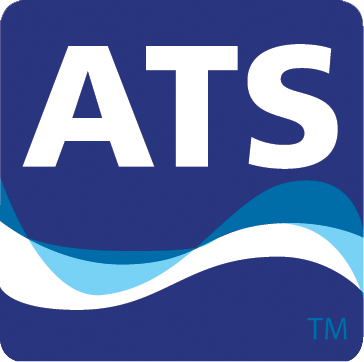Fair disclosure: ATS ShieldSafe does not use evaporative cooling in our cool-down trailers. This article outlines some of the reasons why we do not. We believe that the risk of infectious disease to workers is too great. There is no question that this article is biased by our product design choices.
In the quest for lower price options, many manufacturers of cool-down tailers opt for evaporative coolers, especially in regions with hot, dry climates. While these coolers are effective in lowering temperatures and are often seen as an energy-efficient alternative to traditional air conditioning, their use in cool-down tailers poses significant health risks, particularly the potential spread of Legionnaires’ disease.
Understanding Evaporative Coolers and Their Operation
Evaporative coolers, commonly known as swamp coolers, work by passing outside air over water-saturated pads, causing the water to evaporate and cool the air. This cooler air is then circulated in the trailer. The process is natural and energy-efficient but comes with a significant caveat: it increases humidity and requires a constant water supply, which can foster the growth of bacteria.
The Risk of Legionnaires’ Disease
The primary health concern associated with evaporative coolers is Legionnaires’ disease, a severe form of pneumonia caused by Legionella bacteria. These bacteria thrive in warm, stagnant water – conditions that can occur in poorly maintained evaporative coolers. When the contaminated air is circulated, employees can inhale the bacteria, leading to infection. See the CDC article on Legionella (Legionnaires’ Disease and Pontiac Fever)
Symptoms and Severity
Legionnaires’ disease can be severe, especially for people with weakened immune systems, the elderly, and chronic disease sufferers. Symptoms mimic those of pneumonia, including cough, shortness of breath, high fever, muscle aches, and headaches. If not treated promptly, it can lead to severe health complications and even be fatal. See Mayo Clinic’s article on Legionnaires Disease.
Workplace Implications
For employers, the presence of Legionella in the workplace can have far-reaching consequences. Beyond the immediate health concerns for employees, there are potential legal and financial repercussions. Employers are obligated to provide a safe working environment, and outbreaks of Legionnaires’ disease can lead to lawsuits, loss of employee productivity, and damage to the company’s reputation.
Preventive Measures
The key to mitigating the risk of Legionnaires’ disease in cool-down trailers using evaporative coolers lies in regular and thorough maintenance. This maintenance is time-consuming and may not be performed adequately, especially if the unit is a rental. These steps include:
- Regular Cleaning and Disinfection: Evaporative coolers should be cleaned and disinfected regularly to prevent the growth of Legionella. This includes replacing the water and cleaning the pads and filters.
- Water Management Plans: Implementing a water management plan as recommended by health authorities can help identify potential Legionella hazards and mitigate risks.
- Regular Maintenance Checks: Regular checks by qualified personnel can ensure that the coolers are functioning correctly and that there are no stagnant water issues.
- Employee Awareness and Training: Employees should be made aware of the symptoms of Legionnaires’ disease and the importance of reporting maintenance issues with coolers.
Conclusion
While evaporative coolers allow cool-down trailers to be built more cost-effectively, their use in tight spaces such as a cool-down trailer demands careful consideration and proactive management to prevent the risk of Legionnaires’ disease. Employers must prioritize regular maintenance and employee education to safeguard their workforce’s health. As with any workplace hazard, prevention is key, and understanding the risks associated with evaporative coolers is the first step in creating a safer, healthier work environment.
ATS ShieldSafe avoids this problem altogether through the use of non-evaporative air conditioning units.

